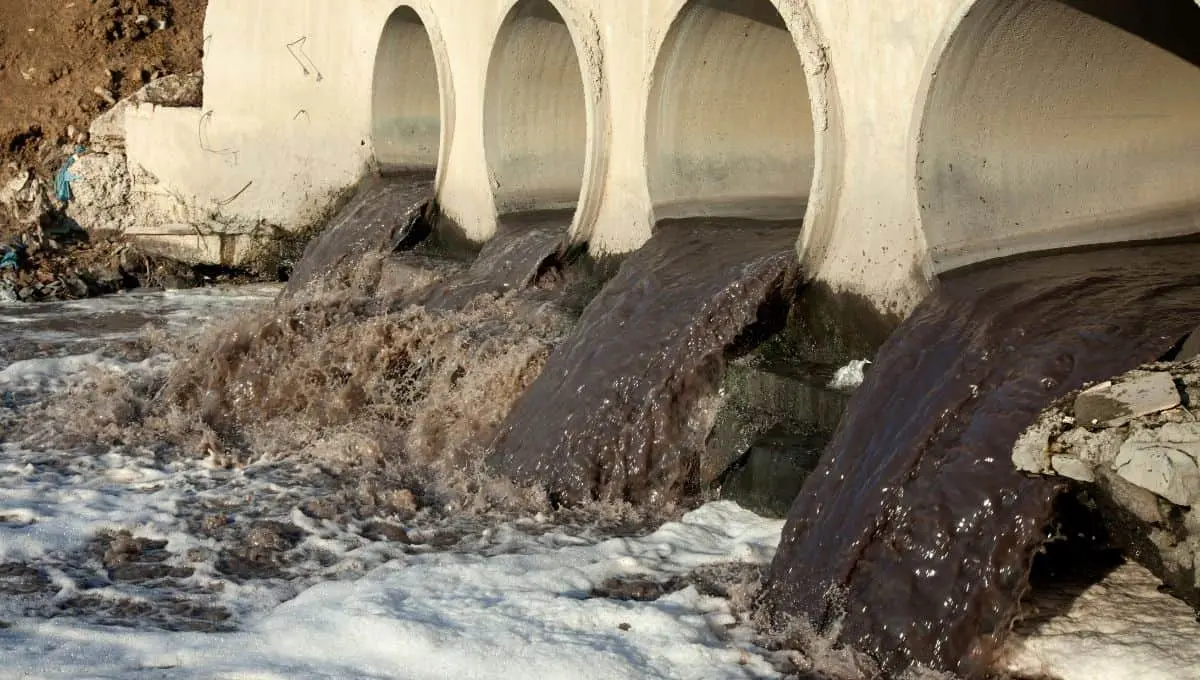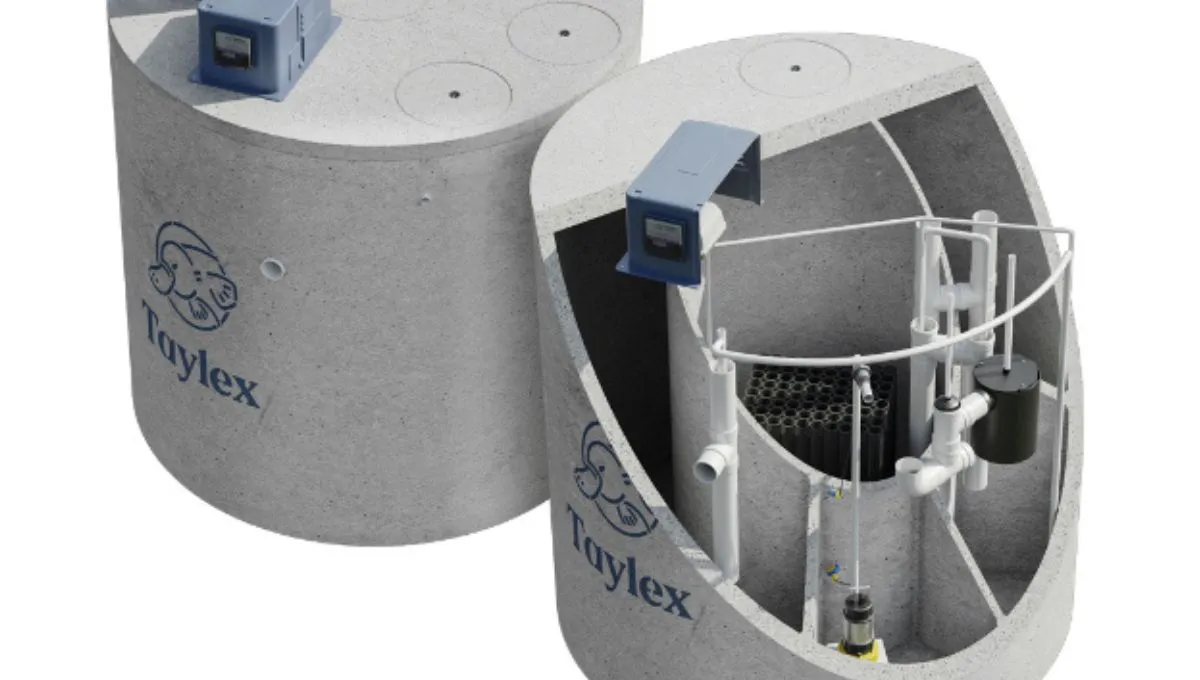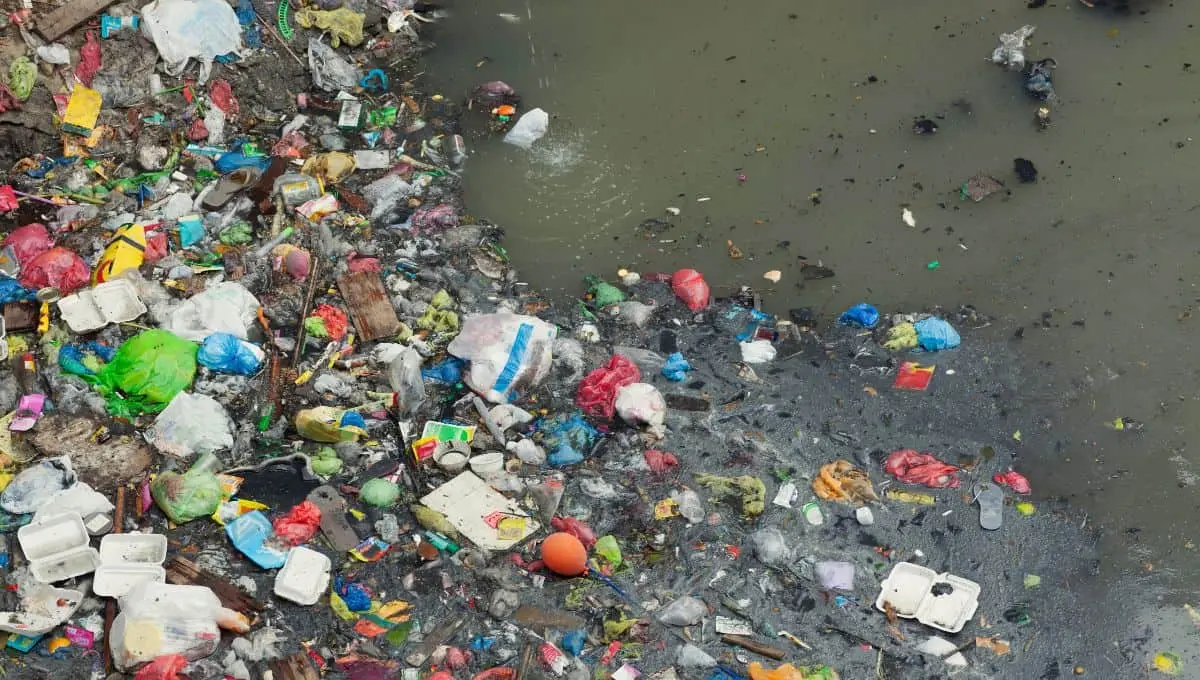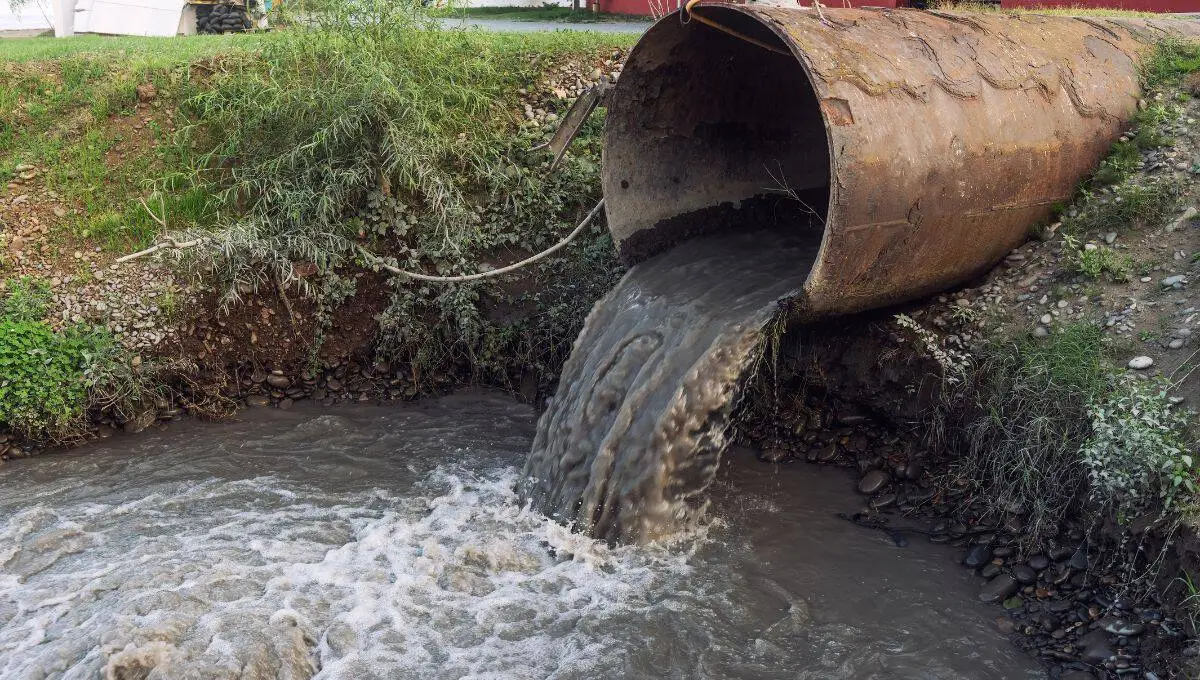— Trusted Since 1969 —

Ever wondered what happens to the water when you flush your toilet? That’s black water—highly contaminated and challenging to dispose of. Yet, proper treatment can transform this problematic wastewater into a valuable resource. Stay tuned to learn how to turn this potential risk into a remarkable opportunity for a more sustainable future.
Black water, deriving primarily from toilets, is a highly contaminated form of wastewater teeming with organic materials, pathogens, and chemicals. These make it hazardous and unsuitable for direct reuse or consumption without extensive treatment processes to reduce contamination risks. Despite these challenges, black water has valuable resources such as nutrients, energy, and water, making it an important candidate for resource recovery.
Black water consists of faeces, urine, and flushing water. It contains abundant organic matter and suspended solids. Research shows that black water accounts for about 51% of the chemical oxygen demand (COD), 91% nitrogen, 78% phosphorus, and most pathogenic microorganisms in household wastewater.
Black water poses serious health risks due to its high concentration of pathogens and chemicals from human waste. Mishandling black water can contaminate drinking water sources and spread disease, emphasising the need for effective management to protect public health and the environment.
Black water, rich in faecal matter and untreated sewage, harbours numerous pathogens. If these pathogens contaminate drinking water or food supplies, they can cause severe illnesses such as cholera and dysentery. The risk also extends to ecosystems, where they can harm aquatic organisms and degrade overall water quality.
Chemicals in black water pose significant environmental concerns. Pharmaceuticals and personal care products that are flushed or discarded can persist in the environment and affect aquatic wildlife’s hormonal and reproductive systems. Moreover, these chemicals can alter the chemical composition of water bodies, making them less suitable for life and disrupting natural processes.
Though essential for life, excessive nitrogen and phosphorus in black water can be detrimental. Black water often contains excess nutrients, leading to eutrophication when released into water bodies. This process promotes dense plant growth that depletes oxygen in the water, resulting in dead zones where aquatic life cannot survive and reducing biodiversity in affected areas.
Black water originates from various everyday activities resulting from modern living. Its sources include residential, commercial, and industrial outputs, each contributing differently to the complexity of wastewater management.
In residential settings, toilets are the primary contributors to black water, with sinks and washing machines also playing a role. These discharges include organic matter, hygiene products, and microplastics, making treatment and recycling more challenging.
Industries and commercial facilities significantly contribute to black water volumes, particularly in food processing and healthcare. Waste from these sources often contains high concentrations of organic compounds and chemicals, requiring effective treatment systems.
Agricultural activities generate black water mainly through livestock operations and the cleaning of agricultural equipment. This type of black water is rich in organic matter. It often contains veterinary medicines and bio-waste, requiring specialised treatment processes to manage safely and sustainably.
Black water is primarily caused by toilet waste, including faeces, urine, and toilet paper, making it rich in organic material and pathogens. This type of wastewater also accumulates various substances, such as personal care products and pharmaceuticals, that are flushed away. The high concentration of these materials contributes to its contamination level, making black water the most polluted form of household wastewater.
Due to its composition, black water poses significant public health and environmental risks. Rigorous management and treatment are necessary to prevent its harmful effects.
Black water poses direct public health risks as it carries pathogenic microorganisms that can cause diseases such as gastroenteritis, hepatitis, and cholera. Improper treatment or accidental mixing with potable water systems can lead to outbreaks of waterborne diseases.
Black water can also severely damage aquatic ecosystems by contributing to eutrophication, which depletes oxygen levels and harms marine life. Moreover, the presence of chemicals in black water can disrupt the hormonal balance of aquatic organisms, causing long-term ecological damage and affecting water body filtration processes.
Black water treatment and recycling convert wastewater from homes and industries into reusable water. This process has multiple stages to ensure the water is safe and sustainable for reuse or environmental release.

Septic systems treat black water on-site by sending wastewater into a septic tank. In the tank, heavy solids settle, while lighter particles float to the top. Microorganisms in the tank break down organic material, and the partially treated water then flows into a drain field for further natural filtration.
The treatment and recycling of black water involve various processes to remove contaminants and recover usable water. These processes range from basic mechanical treatments to advanced filtration and disinfection methods.
At sewage plants, preliminary treatment begins with screening to remove large objects like plastics and rags. Then, grit removal separates sand and small stones. This initial step prevents blockages and damage to downstream equipment, ensuring the treatment plant works efficiently.
During primary treatment, black water enters large tanks where gravity helps separate solids that settle at the bottom, forming sludge. Lighter substances like fats and oils rise to the top. This phase significantly reduces the physical amount of organic matter, making subsequent biological treatments more effective.
In secondary treatment, biological reactors use microorganisms to further break down the dissolved organic substances in the wastewater. This step reduces harmful organic content and prepares the water for final purification.
Tertiary treatment involves advanced filtration and chemical treatments to remove any remaining impurities and pathogens from the water. Techniques like microfiltration, carbon adsorption, and disinfection ensure the water meets safety standards for release or reuse.
After comprehensive treatment, the water is either released into local waterways, following environmental standards, or used again for agricultural, industrial, or urban landscaping purposes. This process helps conserve natural water resources.
Innovative technologies in black water treatment focus on improving efficiency and minimising environmental impact. These include developing more effective microbial treatments, improving filtration techniques, and integrating energy recovery systems to make the process more sustainable.
Anaerobic digestion utilises bacteria in an oxygen-free environment to break down organic matter, converting it into biogas and digestate. Biogas can be used as fuel, while digestate is a nutrient-rich fertiliser that supports a circular economy.
Membrane filtration involves forcing water through microscopic pores that trap contaminants, pathogens, and particles. This method ensures exceptionally clean water output and is suitable for demanding reuse applications like industrial processes or potable water.
Constructed wetlands treat wastewater through a bio-filtration system that utilises wetland vegetation and naturally occurring microorganisms. This ecological treatment solution effectively removes pollutants and supports biodiversity, providing habitat for wildlife.
Proper black water disposal is essential for protecting the environment and public health. Here are practical and effective methods to manage black water responsibly:
Always direct black water to designated sanitation facilities or through well-maintained sewage treatment systems. These facilities have designs to treat black water thoroughly, neutralising harmful substances before they can harm the environment.
Keep black water systems like septic tanks and onboard treatment systems in good condition. Regular checks and maintenance prevent leaks and overflows, protecting our environment from potential contamination.
Applying chemicals to black water helps break down harmful waste and reduce pathogens. This proactive treatment minimises the environmental impact when the water is eventually released.
To reduce the environmental and health impacts of black water, we can adopt several practical strategies:
Install modern and water-efficient toilets to reduce the amount of black water produced significantly. It will ease the strain on our treatment facilities and conserve water, a precious resource.
Opt for biodegradable and toilet-safe products to reduce the volume of non-decomposable waste in black water. This switch makes the treatment process more effective and environmentally friendly.
Incorporate advanced treatment systems, such as aerated wastewater treatment system (AWTS), biological processes and membrane technology, to purify black water. These technologies are vital in ensuring the treated water is safe for release or reuse.
Through efficient water use and waste reduction, we can minimise the production of black water. Techniques like separating greywater from black water, composting toilets, and choosing environmentally friendly household products reduce the generation of black water. These methods simplify the treatment process and help conserve water resources.
Misunderstandings about black water can lead to ineffective management and treatment. Understanding the true nature of black water helps adopt the correct practices for its disposal and treatment.

The belief that black water and greywater are the same is incorrect. Black water contains faecal matter and is significantly more contaminated, requiring more rigorous treatment.
Due to its high contaminant load, black water requires specialised treatment and disposal, unlike greywater, which is generally less harmful.
It’s important to recognise that black water poses a greater risk than other types of wastewater due to its high levels of pathogens and organic materials.
There’s a misconception that black water is merely a waste with no value. Properly treated black water can be repurposed as a source of nutrients for agriculture and reclaimed water for non-potable applications.
Due to the associated health risks, it is important to have professionals handle the cleanup of black water to ensure safety. Water damage restoration companies have the necessary training and equipment to manage these situations effectively. Contacting a licensed plumber or septic tank is more appropriate if the contamination is from a septic system or sewer. In severe or hazardous cases, it is essential to engage biohazard cleanup specialists with expertise in safely dealing with highly contaminated environments.
Treated black water offers several reuse and recycling opportunities that benefit public and environmental health. Effective recycling not only conserves water but also harnesses valuable by-products.
Recycling treated black water contributes to public and environmental health by reducing the release of untreated wastewater into the environment, thus minimising pollution and disease transmission. Reused black water can support irrigation and industrial processes, reducing pressure on freshwater resources.
Treated black water is rich in nutrients and organic matter, making it a valuable resource for agricultural applications. Recycling it as fertiliser can improve soil fertility and structure, promoting crop growth without extensive use of chemical fertilisers.
Anaerobic digestion of the organic material in black water can produce biogas, a renewable energy source. This process reduces the waste volume and provides an alternative to fossil fuels, contributing to energy sustainability.
Advanced treatment processes can convert biomass derived from black water into various useful ways. For example, it can serve as a substrate for growing specific bio-crops or as a renewable component in industrial applications, supporting a circular economy.
Recycling treated black water for non-potable purposes, such as agricultural irrigation, industrial cooling, or toilet flushing, significantly reduces the demand for fresh water. This practice is particularly important in water-scarce areas, ensuring water availability for essential needs.

Despite its benefits, effectively managing black water poses numerous challenges:
Meeting local and international environmental regulations for blackwater treatment and disposal is a constant challenge due to varying standards and frequent legislative changes.
The processes involved in safely treating black water can be expensive due to the energy and advanced technology required. These costs can be prohibitive for smaller communities or developing regions.
Often, a stigma is associated with using recycled water, especially from black water sources, which can hinder public acceptance and limit reuse.
Deploying advanced treatment technologies in areas with limited infrastructure or technical expertise can restrict the potential for black water recycling.
Blackwater, which refers to wastewater from toilets, presents a unique challenge compared to greywater. While greywater contains mild contaminants, blackwater requires specialised treatment due to its high level of contamination. But fret not! Taylex, your trusted wastewater management partner, offers innovative blackwater treatment solutions. Our advanced systems transform this waste into a valuable resource, promoting sustainability and reducing strain on your septic system. Let Taylex help you unlock the hidden potential of blackwater in your home. Contact us!
Regular maintenance is key to preventing foul smells in a black water tank. It includes frequent flushing, cleaning, and using tank maintenance chemicals to break down waste and control odours. Moreover, adequate ventilation also helps reduce bad odours.
Want to learn how to eliminate the smell from black water drains? Discover more in our detailed article on “smelly drains.”
Yes! Dumping black water on the ground is generally illegal due to its high content of pathogens and chemicals, which can contaminate soil and water sources. Regulations typically require proper disposal at designated facilities to protect public health and the environment.
Black water contains more bacteria than greywater because it includes toilet waste, which is rich in faecal matter and other biological contaminants. Greywater, originating from sinks and showers, is less contaminated by pathogenic bacteria.
Generally, urine is categorised as grey water when it does not contain faecal matter. In systems designed for urine separation, it can be treated more like greywater due to its lower levels of pathogens than black water.
Yes! Black water typically has a noticeable smell due to the organic matter and waste products it contains. These odours are often a result of the decomposition of faecal matter and other organic materials in the water.
It is advisable to dump black water first, followed by grey water. This method allows the grey water to flush and clean out residues from the black water in the hose, promoting a cleaner and more hygienic disposal process.
Grey water originates from non-toilet sources such as sinks, showers, and washing machines. It contains soap, detergents, and dirt but has fewer pathogens. On the other hand, black water comes from toilets. It includes faeces, urine, and toilet paper, making it more contaminated and requiring rigorous treatment.